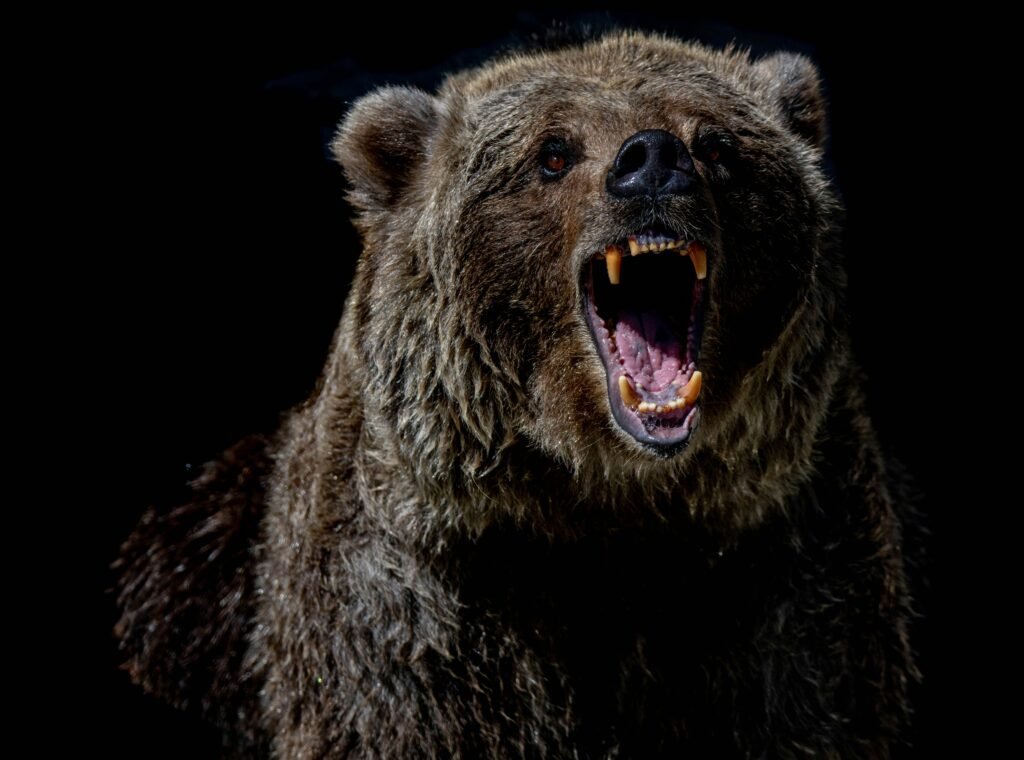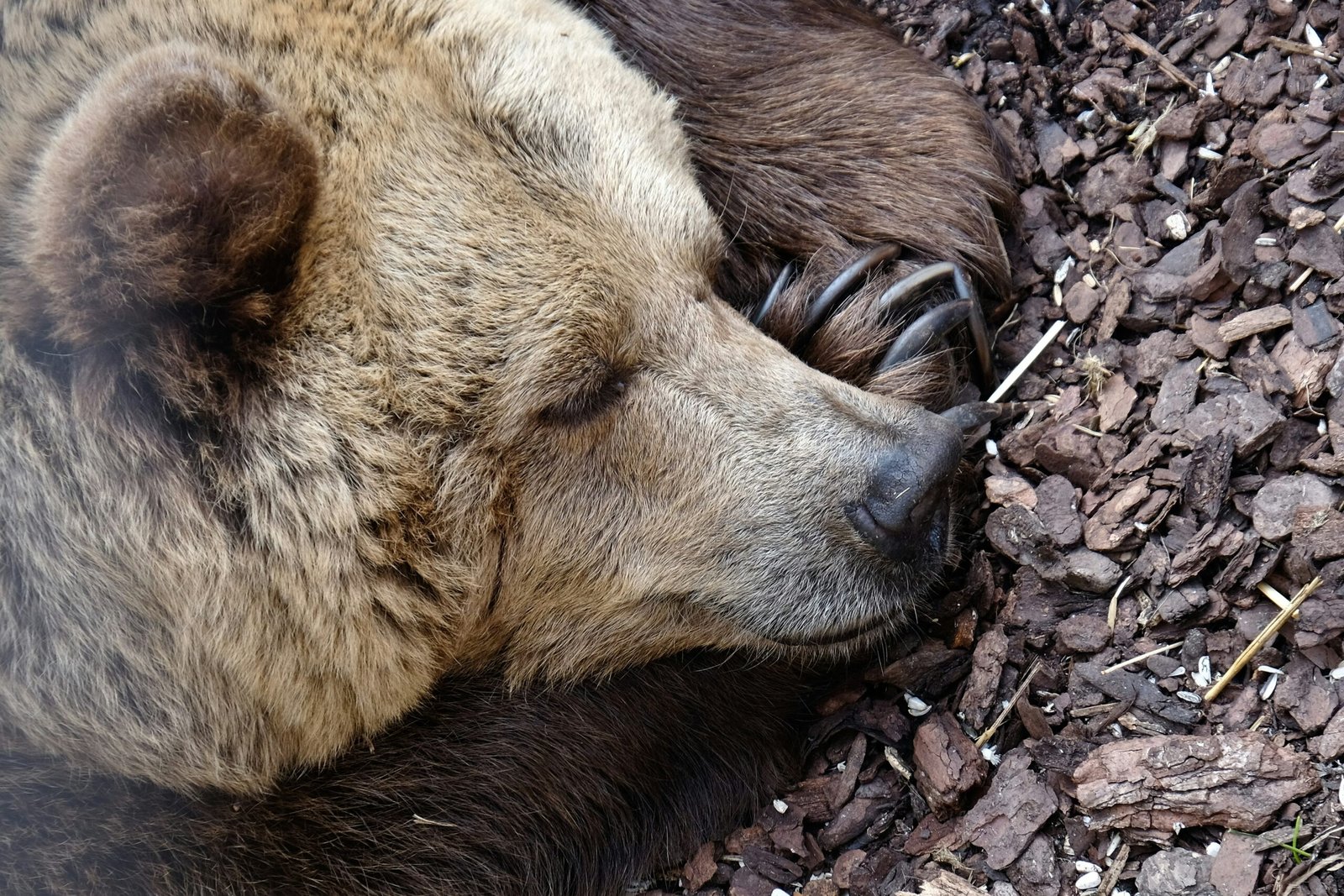Introduction to Polar Bears and Grizzly Bears
Polar Bear vs Grizzly Bear: Polar bears (Ursus maritimus) and grizzly bears (Ursus arctos horribilis) are two of the most formidable predators in the animal kingdom. These magnificent creatures command attention and respect, each boasting unique characteristics and adaptations that have enabled them to thrive in their respective habitats. While polar bears are often synonymous with the icy wilderness of the Arctic Circle, grizzly bears are more commonly associated with the rugged terrains of North America.
The polar bear, with its white fur and massive paws, is perfectly adapted for life in the freezing Arctic environment. Their thick blubber layer provides insulation against the cold, and their streamlined bodies allow them to be proficient swimmers, capable of covering vast distances in search of food. In contrast, grizzly bears exhibit a broader range of adaptability. Found primarily in Alaska, western Canada, and the northwestern United States, grizzlies are known for their brown fur, powerful limbs, and extraordinary strength. Their ability to forage and hunt in diverse ecosystems ranging from dense forests to mountain ranges underscores their versatility as apex predators.
This blog post aims to delve into the fascinating worlds of these two majestic predators. We will explore their physical characteristics, behavioral traits, dietary habits, and the distinct challenges they face in the wild. By doing so, we hope to provide a comprehensive comparison of polar bears vs grizzly bears, shedding light on what makes each species unique and how they have evolved to become iconic symbols of nature’s power and beauty.
Readers can expect to gain a deeper understanding of the ways in which polar bears and grizzly bears contribute to their ecosystems, the threats they encounter due to environmental changes, and the ongoing conservation efforts aimed at protecting these remarkable creatures. Join us on this journey to unravel the complexities and marvel at the resilience of these awe-inspiring bears.
Polar Bear vs Grizzly Bear: Habitat and Distribution

Polar bears primarily inhabit the Arctic regions, where they are most often found on ice floes and along coastal areas. These magnificent creatures are specially adapted to thrive in cold environments. The Arctic Ocean’s sea ice serves as their main hunting ground for seals, their primary food source. With ice floes constantly shifting, polar bears are highly nomadic and can travel long distances across the frozen landscape. They are predominantly located throughout the circumpolar north, with notable populations in Canada, Alaska, Russia, Greenland, and Norway.
On the other hand, grizzly bears, a subspecies of the brown bear, have a wider range that spans across North America. Their habitats include dense forests, mountainous regions, and open plains. Unlike polar bears, which are mostly limited to cold environments, grizzly bears are versatile and can be found from the interior of Alaska to the western United States and parts of Canada. These bears favor areas with significant food resources, such as rivers with abundant salmon, lush meadows, and berry-rich forests.
Both polar bears and grizzly bears are facing unprecedented challenges due to climate change and human encroachment. For polar bears, the loss of sea ice is particularly alarming as it drastically reduces their hunting grounds. Declining ice coverage forces them to swim greater distances, which can lead to exhaustion and decreased hunting success. The rapid changes in their environment are pushing polar bears closer to shorelines, sometimes leading to increased human-wildlife conflicts.
Grizzly bears are also experiencing habitat disruption. Human expansion into forested and rural areas has fragmented their natural habitats, making it harder for them to find food and mates. In some cases, human activities such as logging and road construction have directly reduced the available habitat for grizzly bears. Conservation efforts are in place to mitigate some of these impacts, including protected areas and wildlife corridors, but the challenges remain substantial.
Polar Bear vs Grizzly Bear: Physical Characteristics
The physical characteristics of polar bears and grizzly bears reflect their adaptations to distinct ecosystems. Polar bears are the larger of the two species. Adult males typically weigh between 900 to 1,600 pounds and can reach a length of up to 10 feet. Their fur, which appears white but is actually translucent, camouflages them in the icy Arctic environment. Underneath, their skin is black, which helps in absorbing heat from sunlight. These bears are also characterized by a streamlined build and long necks that aid in swimming, one of their primary modes of travel across their frozen habitat.
Grizzly bears, in contrast, inhabit forests and mountains where agility and power are more critical. Male grizzlies weigh between 400 to 790 pounds and measure between 6 to 7 feet in length. Unlike the polar bear, the fur of the grizzly bear ranges in color from blond to dark brown, often with a grizzled appearance due to lighter tips. One of the most distinctive features of grizzlies is the prominent muscular hump on their shoulders, which is an adaptation for digging and powerfully slicing through vegetation or prey. This hump supports their forelimbs, enabling them to exert a great amount of strength.
While polar bears have developed large, paddle-like paws for swimming and walking on ice, grizzly bears have shorter, more curved claws suitable for digging and climbing. Each species exhibits adaptations that underscore its supremacy in vastly different landscapes—the open, icy expanses in the case of polar bears and the dense, varied terrains for grizzly bears. These physical characteristics are a testament to the incredible versatility and evolutionary prowess displayed by these two majestic predators.
Polar Bear vs Grizzly Bear: Diet and Hunting Strategies
When examining the dietary preferences and hunting strategies of polar bears versus grizzly bears, stark contrasts emerge between these two formidable predators. Polar bears, primarily found in the Arctic regions, are highly specialized hunters with a diet predominantly consisting of marine animals. Seals, particularly ringed and bearded seals, are the cornerstone of their diet. Polar bears employ various sophisticated hunting techniques, such as ice-breaking and stalking. They utilize their powerful front paws to break through thick ice to access seal breathing holes. Additionally, leveraging their impeccable sense of smell, they can detect seals from a considerable distance, enabling them to lie in wait or stealthily stalk their prey across ice and snow-covered terrains.
Grizzly bears, in contrast, showcase a remarkable level of dietary adaptability, demonstrating an omnivorous palate. Their diet spans a wide range of food sources, reflecting seasonal availability and environmental conditions. During summer and early autumn, grizzly bears are often found fishing for salmon in rivers and streams, a crucial high-protein resource essential for fat accumulation before hibernation. Their foraging habits are further broadened by their consumption of small mammals, such as rodents and carrion, in addition to a substantial intake of vegetation, including berries, roots, and nuts. This diverse diet showcases the grizzly bear’s resilient nature and its ability to thrive in varied habitats, from dense forests to river valleys.
Seasonal dietary shifts are a notable aspect of grizzly bear foraging strategies. As seasons transition, their dietary focus shifts from protein-rich options, like fish and meat, to more carbohydrate-rich plant materials. This cyclic dietary pattern ensures that grizzly bears effectively manage their energy requirements throughout the year, particularly in preparation for the winter months of hibernation. Contrary to the highly specialized and primarily meat-based diet of polar bears, grizzly bears’ omnivorous tendencies underscore their adaptability to ecological changes and food availability.
Behavior and Social Structure
Polar bears and grizzly bears, while both belonging to the Ursidae family, display distinctly different behavioral patterns and social structures tailored to their respective habitats. Both species exhibit solitary behavior for the most part, yet their social interactions and territorial behaviors do show significant variations.
Polar bears, inhabitants of the Arctic, are known for their nomadic lifestyle. They traverse vast ice floes and open waters in search of their primary food source, seals. Mating rituals for polar bears typically occur between March and May when males traverse large distances to find a suitable female. After a gestation period that includes delayed implantation, pregnant females enter maternity dens usually between October and December. The denning period reflects a hibernation-like state, albeit with continued awareness, during which the mother gives birth and tends to her cubs until they are robust enough to face the outside world, usually around March or April.
Conversely, grizzly bears, residing primarily in North America, demonstrate more territorial behavior. These bears occupy distinct home ranges, and while their paths may overlap, they often avoid direct interaction unless during mating season, which occurs from May to July. Grizzly bears exhibit notable maternal care, with females giving birth during their true hibernation period in dens from November to April. This hibernation is characterized by a significant metabolic slowdown, differing from the polar bear’s partial dormancy.
Interactions between polar bears and grizzly bears are rare but have led to interesting hybrid species known as ‘pizzly’ or ‘grolar’ bears. These hybrids typically emerge in regions where the habitat ranges of both species overlap due to climatic changes, leading to interbreeding. Such occurrences signify a remarkable yet concerning indicator of shifting ecological dynamics influenced by global warming.
Understanding the complexities of polar bear vs grizzly bear behavior and social structures provides valuable insight into the adaptive strategies that have allowed these majestic predators to thrive in their respective environments.
Predators and Threats
Polar bears and grizzly bears, as apex predators, have relatively few natural threats. However, their existence is significantly impacted by external factors such as climate change, habitat destruction, human conflict, poaching, and the illegal wildlife trade. These threats pose substantial risks, which have led to various conservation efforts aiming to ensure the survival of these majestic creatures.
Natural predators for polar bears are few; adult polar bears have virtually no enemies in the wild, aside from occasionally being killed by other polar bears. Conversely, grizzly bears have been known to face threats from wolves and mountain lions, particularly to their cubs. Both species, however, are increasingly vulnerable due to environmental changes and human activities.
Climate change represents a significant threat to polar bears. The loss of sea ice, essential for their hunting and denning, forces these bears to travel longer distances and expend more energy to find food. This not only affects their health but also reduces their overall population. Grizzly bears, on the other hand, face habitat changes that impact their food sources, with warmer temperatures causing shifts in the vegetation and prey availability in their environments.
Human activities present considerable threats to both polar bears and grizzly bears. Habitat destruction due to urbanization, agriculture, and industrial activities fragments their living spaces, making it difficult for them to find food and reproduce. Human-wildlife conflicts arise when bears venture closer to human settlements in search of food, often leading to lethal measures taken against the bears.
Poaching and illegal wildlife trade also pose significant dangers. Both polar bear and grizzly bear parts are sought after in various black markets. This illicit trade contributes to the decline of their populations and disrupts conservation efforts.
In response to these challenges, numerous conservation initiatives have been implemented. For polar bears, international agreements like the Polar Bear Agreement aim to protect their habitat and ensure sustainable hunting practices. Grizzly bear conservation efforts often focus on habitat preservation, creating wildlife corridors, and engaging in human-bear conflict mitigation strategies. By addressing these threats, it is hoped that these efforts will contribute to the long-term survival of both polar bears and grizzly bears, safeguarding these iconic species for future generations.
Adaptations for Survival
Polar bears and grizzly bears, though both awe-inspiring predators, have evolved distinct adaptations that enable them to thrive in their respective habitats. Polar bears, found primarily in the Arctic, rely on their insulating fat reserves, exceptional swimming capabilities, and keen sense of smell to survive. The thick layer of blubber beneath their skin not only provides insulation against the frigid temperatures but also serves as an essential energy reserve during periods of scarce food availability. Furthermore, polar bears are adept swimmers, capable of traveling vast distances across open water in search of prey. Their large, powerful front paws act as paddles, propelling them through icy waters with remarkable efficiency. An acute sense of smell allows polar bears to detect seals, their primary prey, from nearly a mile away, even through dense snow and ice.
On the other hand, grizzly bears inhabit diverse terrestrial environments ranging from dense forests to mountain ranges. Their adaptations for survival are distinctly varied compared to polar bears. Grizzly bears possess formidable claws, often measuring up to four inches in length, which are instrumental in digging for roots, unearthing small mammals, and catching fish. Their muscle strength, particularly in the shoulder and neck regions, enables them to flip over heavy rocks and logs to access hidden food sources. Additionally, grizzly bears undergo hibernation as a key adaptive trait, allowing them to conserve energy during the winter months when food is scarce. During hibernation, grizzlies enter a state of reduced metabolic activity, sustaining themselves through the fat reserves built up during the summer and fall.
These adaptive traits not only highlight the remarkable evolutionary paths taken by polar bears and grizzly bears but also underscore their resilience in overcoming the challenges presented by their respective environments. Whether traversing the icy expanses of the Arctic or roaming the varied landscapes of North America, these majestic predators are finely tuned for survival under harsh and demanding conditions.
Conclusion and Future Outlook
In conclusion, our comparative analysis of polar bear vs grizzly bear highlights the distinct features and adaptive strategies that make each species unique. Polar bears are specially adapted to the Arctic’s icy landscapes, relying heavily on sea ice for hunting seals, while grizzly bears thrive in varied environments, from dense forests to alpine meadows. Both species exhibit remarkable resilience and adaptability within their respective habitats.
While polar bears are known for their powerful swimming abilities and reliance on sea ice, grizzly bears are celebrated for their diverse diet and incredible strength. These adaptations underscore the evolutionary marvels of each species, allowing them to dominate different ecological niches. However, it is crucial to recognize that both species face significant threats due to climate change, habitat loss, and human activity. Polar bears, in particular, are severely impacted by the reduction of Arctic sea ice caused by global warming, which disrupts their hunting and breeding patterns. On the other hand, grizzly bears face challenges such as deforestation, human encroachment, and conflicts with livestock.
The future outlook for both species hinges on the effectiveness of ongoing conservation efforts. For polar bears, initiatives aimed at mitigating climate change and protecting sea ice habitats are paramount. Meanwhile, for grizzly bears, maintaining and expanding protected areas, along with promoting coexistence strategies with local communities, are essential. It is imperative that we, as a global community, support and engage in conservation initiatives to ensure the survival of these magnificent creatures. Through concerted efforts, we can help preserve the majestic beauty and ecological roles of both polar bears and grizzly bears for future generations to admire and study.
We urge readers to educate themselves about the challenges these species face and to support organizations dedicated to wildlife conservation. Every action counts in the quest to secure a viable future for both polar bears and grizzly bears.
If you need a website for your business, blog, or e-commerce store, just click the link here





